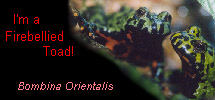
Rambling LA is my attempt to share what I'm learning about nature in Southern California. I hope you can use this site as a guide for exploration. I can't think of anything more precious than the life on earth, in all it's splendid diversity, from dainty foxes that live on the Channel Islands to the goldfinches that frequent my yard. To preserve nature, we need to understand it--and enjoy it. (By this, I really mean ecosystems: water, soil and diverse communities plants and animals that have evolved together. We could make the planet quite inhospitable, and some forms of life would persist.)
Conservation biologists say, globally, we are in the midst of a mass extinction of species: because of human activities, earth's plants and animals are winking out at more than a thousand times the natural rate. Conservation International lists California as one of the planet's
biodiversity hotspots--places with a lot species that don't live anywhere else, many of them vulnerable to extinction. California (including a slice of Baja California) is especially rich in rare plants. More than 2,000 species are endemic (i.e. only found here).
You can grow many of these plants--and their cultivated cousins--in your own yard, providing shelter and food for local animals. To learn more about gardening with native plants, find the "gardening" label on the right-hand side of this blog. Non-native plants can also shelter and feed animals, including humans. I write about some of these, too--especially those that are better adapted to our climate.
I frequently post hikes and bike rides that are suitable for the whole family. Hikes are broken down into regions: Angeles National Forest (ANF), San Fernando Valley (SFV), and Los Angeles (LA). (More regions soon.) Kid-friendly hikes are usually dog-friendly hikes as well.
Rambling LA also features information on nature classes and projects, as well as mini-reviews of field guides, nature and gardening books, etc.
Soon I'll debut a new urban nature column to be featured here and on our sister site,
Chance of Rain.
I'm an environment reporter. That's not the same as an environmentalist. Environment reporters write about, you guessed it, the environment. We care deeply about the earth, but remain open as to solutions and approaches to problems; we recognize the variety of perspectives on environmental issues.
Still, that doesn't mean I'm going to sit back and watch our planet fall apart. A few years ago, I profiled Andy Lipkis, founder of TreePeople. He told me that the adage "you can make a difference" was a lie. The reality, he said, is "you do make a difference": every day, for better or for worse, your choices affect the earth. So here's where I'm going to lay it on thick: Folks, the climate crisis upon us. Future generations--for some of us, our own children and grandchildren--are going to ask some searing questions. How could you let this happen? Why didn't you do more? Didn't you care? You won't be able to feign ignorance.
Don't lurk under the covers. Explore, learn, protect.
 When friends and neighbors drop by these days, I often find myself apologizing for the homeless encampment look of our backyard: the clothing strung up on the arbor, a little city of cardboard boxes my two-year-old drives his toy cars on, and gobs of cups, buckets and shovels spilling out from the kiddie pool and sandbox, etc. I'm hopelessly didactic, so I'm likely to point out the conservation mantra: reduce, reuse, recycle.
When friends and neighbors drop by these days, I often find myself apologizing for the homeless encampment look of our backyard: the clothing strung up on the arbor, a little city of cardboard boxes my two-year-old drives his toy cars on, and gobs of cups, buckets and shovels spilling out from the kiddie pool and sandbox, etc. I'm hopelessly didactic, so I'm likely to point out the conservation mantra: reduce, reuse, recycle.  The clothesline is retractable and is strung between poles of a shade structure that covers our patio. On hot Southern California days it's ridiculous to turn on your dryer, then crank up the AC. According to National Geographic's The Green Guide, a typical dryer emits 1,450 pounds of the global warming gas CO2 a year. That's equivalent to driving the average car more than 1,400 miles.
The clothesline is retractable and is strung between poles of a shade structure that covers our patio. On hot Southern California days it's ridiculous to turn on your dryer, then crank up the AC. According to National Geographic's The Green Guide, a typical dryer emits 1,450 pounds of the global warming gas CO2 a year. That's equivalent to driving the average car more than 1,400 miles.









 One of my son's favorites is Descanso Gardens in La Canada. I suspect it's mostly because of the train ride, but I know he appreciates other delights here, too, including talking to the ducks.
One of my son's favorites is Descanso Gardens in La Canada. I suspect it's mostly because of the train ride, but I know he appreciates other delights here, too, including talking to the ducks. In this program, stories are followed by crafts. Then parents and kids are given a map of things to explore on their own in the garden. I mumbled to a friend that perhaps the class was a ploy to draw kids into the vicinity of the pricey train rides ($3 for a short ride).
In this program, stories are followed by crafts. Then parents and kids are given a map of things to explore on their own in the garden. I mumbled to a friend that perhaps the class was a ploy to draw kids into the vicinity of the pricey train rides ($3 for a short ride).